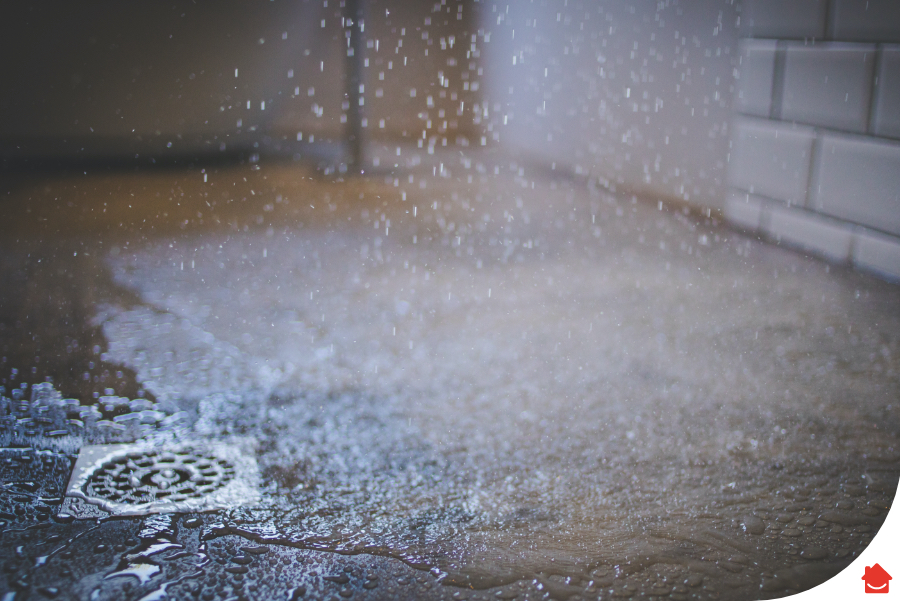Plumbing advice
How to unblock a shower drain
09 Aug 2021 • 5 minutes


The last thing you want to step out of after having your morning shower is a tray full of soapy water. We’re here to help you wash away problems!
Getting a blocked shower drain isn’t ideal. However, it doesn’t necessarily mean you need to call a plumber straight away, read our article to see what damage a leaking shower can do. We’re here to make that, hopefully, your last resort! Using some things you may have already around the house, you could unblock your drain by yourself and get on with your day. But how can you tell it’s blocked in the first place? Let’s get started.
The most likely sign would be a pool of water left after your shower, or it taking longer to drain away. You may also notice an unpleasant smell, which could mean that there’s something stuck inside the pipe.
The most common causes are strands of hair, sanitary products and even children’s toys. And of course, over time, soap or sediment deposits can build up on the walls of the pipes, causing blockages which can then lead to damage such as cracks and breaks. Read our article for common causes and fixes of a leaking shower.
It’s worth having a quick look in the drain first, so grab a torch and see if there’s anything that would immediately explain what’s causing the problem. Some shower drains incorporate a removable cover and trap insert, this allows for the removal of debris within the trap and simply twists in and out for maintenance.
If the blockage is near the plug hole, a plunger can help to move or even draw it out. Placing it over the plug, push it up and down a few times to create a suction. Putting vaseline around the edge can also help to create a better seal.
No, it’s not time for a cuppa just yet. Boil the kettle, leave it for a few minutes and then pour the whole lot down the drain. Make sure it’s not boiling or it could end up causing more damage to your pipes.
Get some gloves on and see if you can dislodge the blockage yourself. If you’ve got a shower drain cover, try and remove it, as it’ll give you easier access. You could also consider trying a plumber’s snake – it’s a handy tool that allows you to reach deeper into the drain. Once it’s in, just twist the handle then pull it back up.
These old faithfuls, possibly hanging around at the back of your kitchen cupboards, once mixed can create a winning solution. First of all, pour a cup of baking soda down the drain, followed by a cup of vinegar a few minutes after. Wait a couple of hours then check to see if the blockage has dissolved and pour some hot water down to clear away any excess.
Be careful with this one. Chemical drain unblockers, available from your local supermarket or DIY store, can be used to get rid of stubborn blockages, but should be used as a last resort. Don’t use drain unblockers regularly either as this can cause damage to your pipes over time.
One of these can proactively catch any debris before it goes anywhere near your pipes. Place the catcher across the plug and make sure you clean them regularly so they’re able to do a good job.
Pouring a kettle of hot water down the drain once a week can really help to keep those blockages at bay. Remember, the water should never be extremely boiling hot!
If all else fails, it might be time to get an expert plumber to find out what’s going on with your drain. They’ll have the tools and the knowledge to identify the best course of action to help get rid of the blockage as quickly and as safely as possible.
If you find yourself left needing an expert, then look no further than our comprehensive plumbing cover. Suitable for homeowners and landlords, with protection in place you’d have access to our nationwide network of plumbers when you need them the most.
A mixture of baking soda and vinegar is the natural way to dissolve any hair clogs in your drain, without having to resort to using chemicals.
Fizzy drinks have phosphoric acid, which acts as a prevention of mould and bacteria build-up. Make sure it’s listed as one of the ingredients when buying it. Bring it to room temperature, pour the contents in and then flush away after a couple of hours with some hot water.
Bleach is great at breaking down and killing germs. However, it won’t fare well when trying to get through and dissolve clogs trapped in your pipes.
Plumbers tend to use a drain auger. It’s a long, flexible coil of metal that works like a corkscrew. The end goes down the drain until it reaches the clog. If it’s not used correctly, it could cause damage to your pipes so it’s best to seek help from an expert.
Most chemical-based cleaners generate heat inside the pipe and PVC may not withstand the heat and harm the pipe joints. If you want to try a home-based chemical remedy, try vinegar and baking soda. They pose no danger whatsoever to your pipes.
Our help & advice articles cover Plumbing, Home heating, Electrical, Energy-saving and Home maintenance.